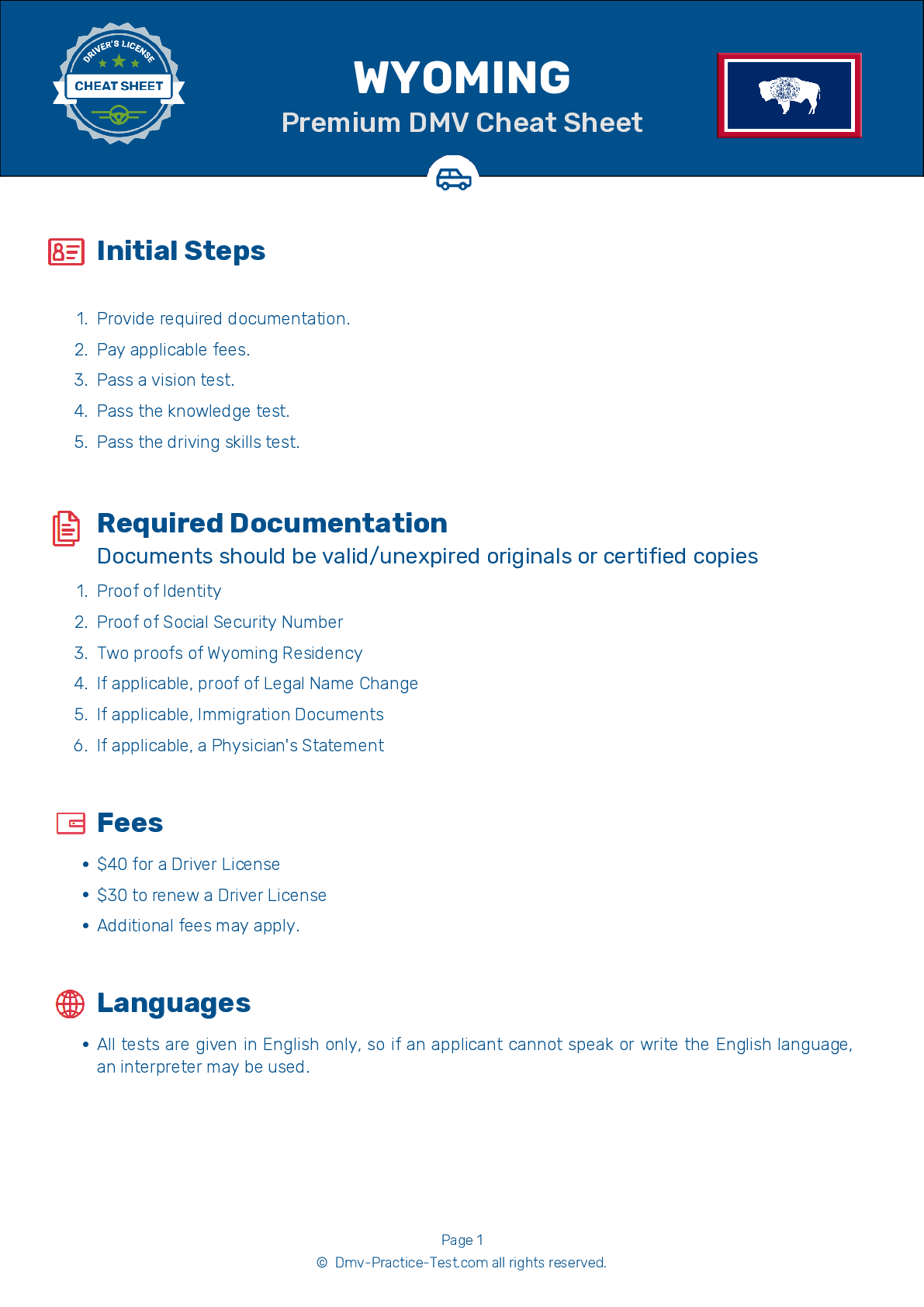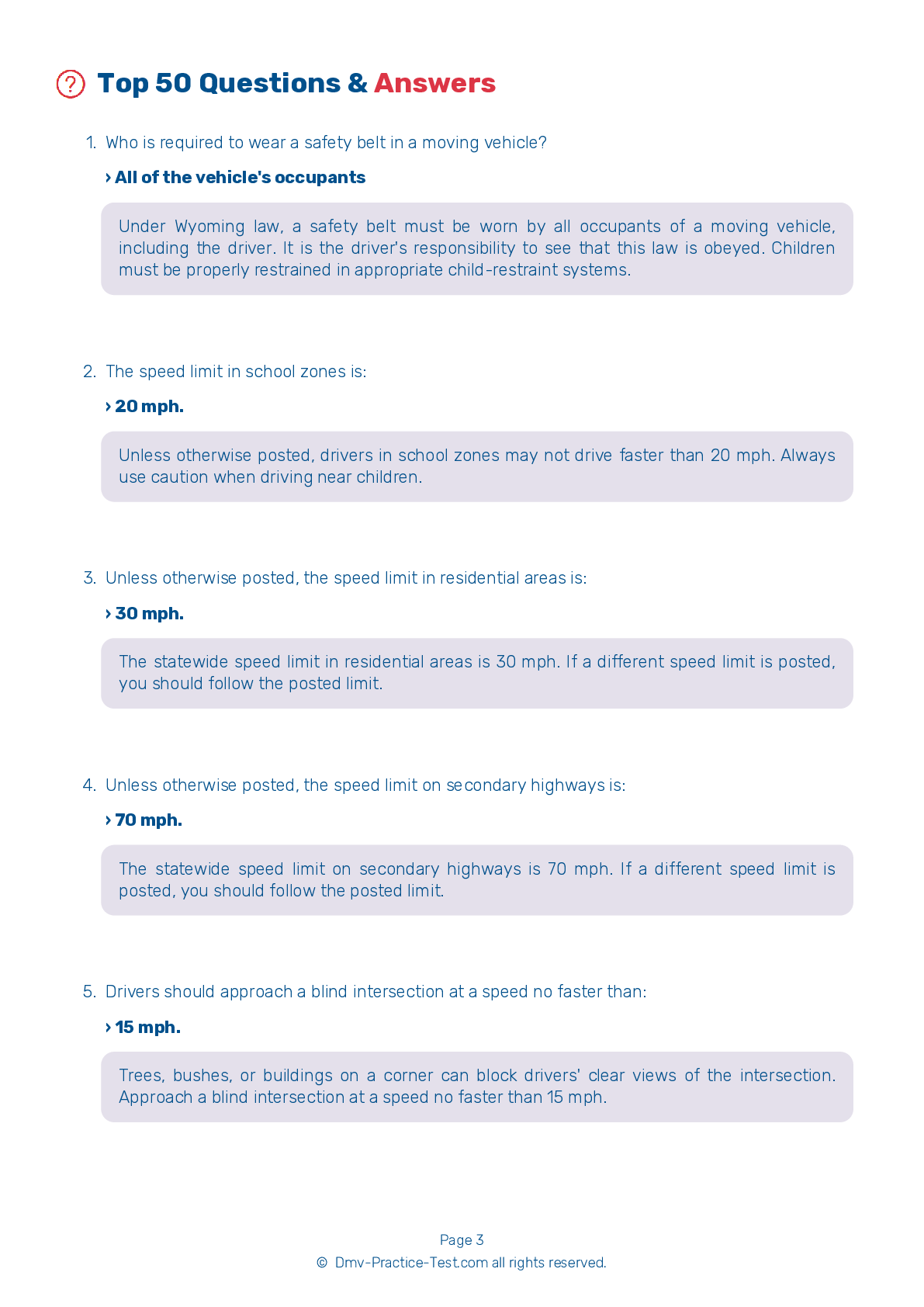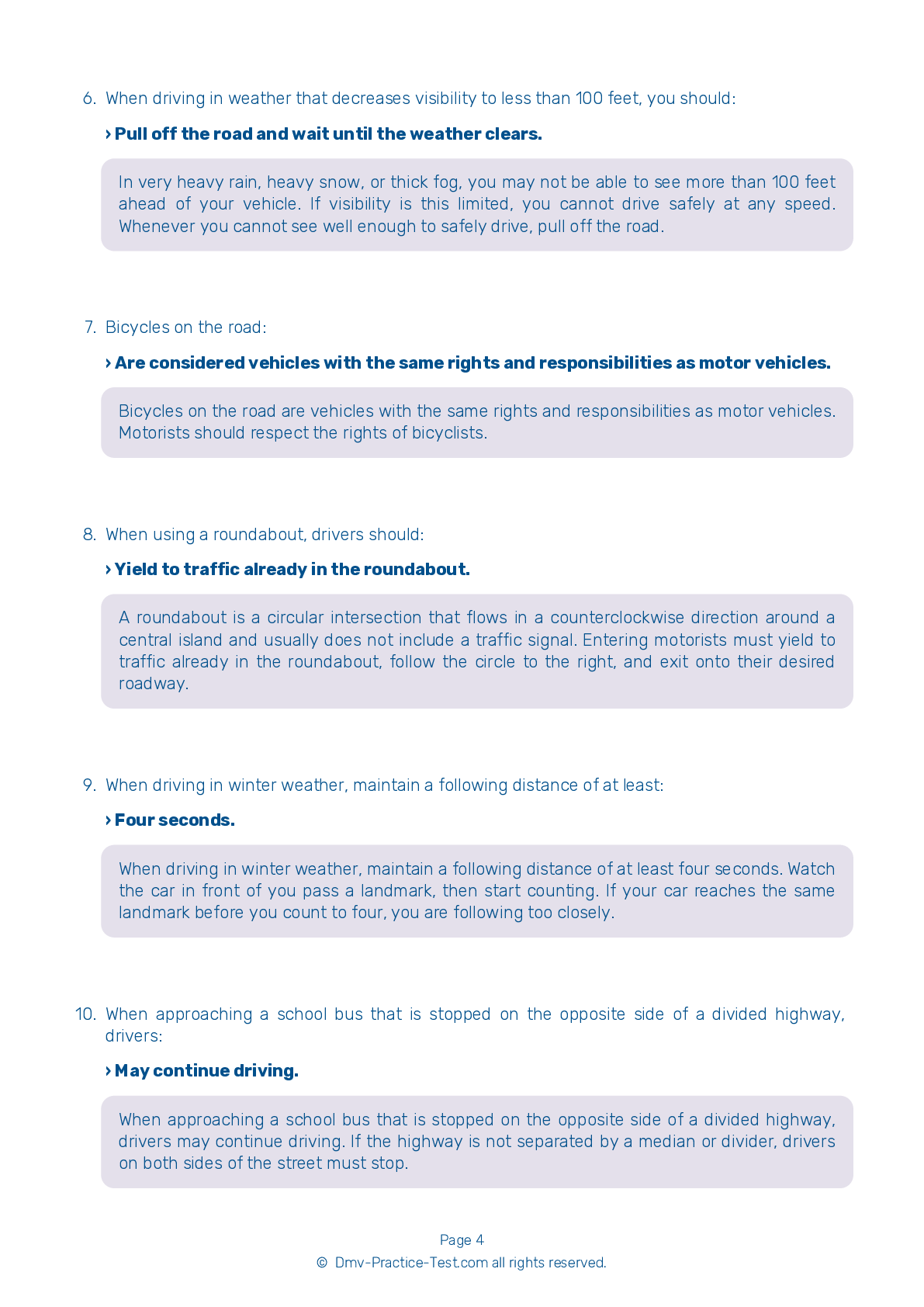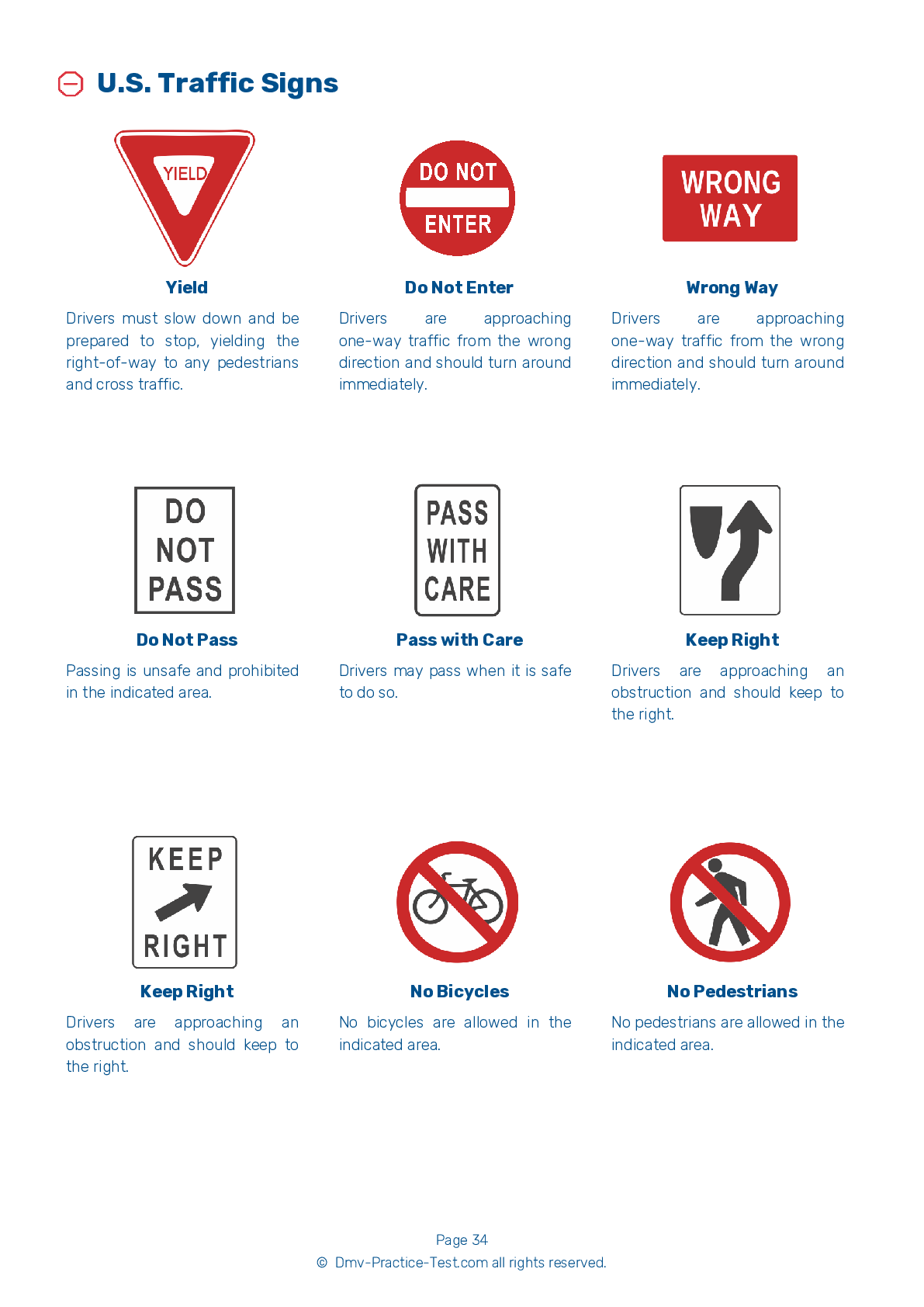FREE Wyoming DMV Practice Test #3
The Wyoming DMV practise examinations have been updated for January 2025. It includes questions based on the Wyoming Driver Handbook's most significant traffic signals and legislation for 2025. Use actual questions that are very similar (often identical!) to the DMV driving permit test and driver's licence exam to study for the DMV driving permit test and driver's licence exam.
On the practise exam, each question gets a tip and explanation to help you remember the concepts. The written component of the official Wyoming DMV test will include questions about traffic rules, traffic signs, and driving statutes, as well as knowledge from the Driver Handbook.
To obtain a passing grade, you must correctly answer 40 of the 50 questions. Use the practise exam provided by the Wyoming Department of Motor Vehicles to help you prepare for your instruction permit or driver's licence.
The DMV exam is available in several languages.
Using any kind of testing assistance will result in an automatic fail, and the DMV may take additional action against your driver's licence, so stay away from it.
1 . If you drive more slowly than the flow of traffic, you will most likely:
You must drive more slowly than usual when there is heavy traffic or bad weather. However, if you block the normal and reasonable movement of traffic by driving too slowly, you may be cited. You should match the speed of traffic, unless the speed of traffic exceeds the legal speed limit.
2 . You see pedestrians near the road. You should:
Watch for any pedestrian who may cross your path. If you see pedestrians near the road where you are driving, slow down and be prepared to stop, if necessary.
3 . After passing a vehicle, it is safe to return to your driving lane when:
Before you return to your driving lane, be sure you are not dangerously close to the vehicle you have just passed. One way to do this is to look for the vehicle in your inside rearview mirror. When you can see both headlights in your rearview mirror, you may have enough room to return to your driving lane.
4 . To improve visibility lowered by rain or fog, drivers should use their:
Use low beam headlights when driving in rain, snow, sleet, or fog. High beam headlights in adverse weather conditions lower visibility by reflecting off the precipitation and back into the driver's eyes.
5 . When turning left from a two-way street onto a one-way street, you should:
When making any turn, turn from the lane closest to the direction you wish to travel into the first available legal lane. On a turn from a two-way to a one-way street, this means you should turn into the first lane.
6 . Which lane must you be in before making a left turn from a one-way street?
When making any turn, turn from the lane closest to the direction you wish to travel into the first available legal lane. If you are making a left turn from a one-way street, this means that you would make the turn from the lane nearest to the left curb.
7 . This sign means:




